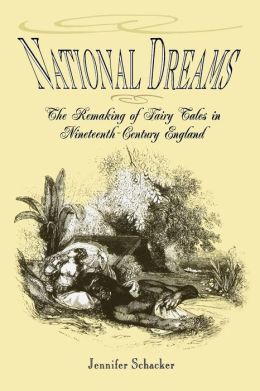And I'm not saying that there isn't something to be said for integrity, but the reality was, the Grimms were getting pressure from casual readers and academics alike to alter the form and content of their tale collections. Their editors and publishers wanted to make money, and so the tales were altered as time went on.
However, this is only the beginning of the story. As we know, the tales continued to change and morph over time, but a very important part of their evolution that is often overlooked and forgotten are translators. I think I always used to take it for granted that translation could be trusted, but I've recently learned that there are issues even with the most modern and respected translation of Villeneuve's Beauty and the Beast. Similarly, when Grimms' Fairy Tales was first translated into English, the Edgar Taylor continued the process the Grimms had already started and the tales resembled their original forms even less, as they became more an more an ideal for the moral education of children, which was never the purpose of oral folklore.
Grimms' Children's and Household Tales made its first appearance in England in 1823 under the title German Popular Stories, under publisher Charles Baldwyn, translated and adapted by Edgar Taylor. According to Jennifer Schacker, "With a focus on humor, justice, and romance, this little book encapsulates the themes and worldview that have since come to be associated with the genre of the fairy tale. Indeed, no one has done more to shape contemporary conceptions of the fairy tale-its content, tone, function, origin, and intended audience-than English solicitor and amateur folklorist Edgar Taylor."
In an age of increasing industrialism, the old German tales seemed to hearken back to "the good old days"-the times when women actually spun wool as opposed to fabric being created in a factory; the times when simple peasants lived in the rural countryside. The book was presented as a quaint and picturesque look into German history.
But of course, the tales were not as authentic as people thought they were. The Grimms themselves admitted that one of the aims of their collection was to "bring pleasure," as well as being "a manual of manners." In Taylor's hands the stories became even more so. Thirty-one out of 161 tales made up the first edition of German Popular Stories, which he shortened and adapted.
Many of Taylor's changes were to eliminate or tame "episodes of gory retribution, dangerous villains, premarital sex, and even references to the Devil." Snow White's stepmother does not dance herself to death in red-hot slippers, but choked with passion and fell down dead. The Princess of The Frog Prince does not wake to find a handsome prince in bed with her, but standing at the head of her bed. Devils become giants. The song that the bird sings in Juniper Tree no longer says "My mother she slew me, My father he ate me" but "My father thought me lost and gone"-taking away the eeriest part of the song, the relish the father has in unknowingly cannibalising his son. The bird goes on to sing of how he "roves so merrily" as if he enjoys being a bird, and being murdered by his stepmother wasn't so bad after all.
To be fair, Taylor never claimed absolute fidelity in translation, but admitted to editing the tales with children in mind. Donald Ward believes that had the tales not been edited by the Grimms, "no one other than a handful of philologists and narrative researchers would have heard of them today." Hard to imagine a world without knowledge of Grimms' fairy tales...
Part of reinforcing the image of fairy tales as harmless and light were the illustrations provided by George Cruikshank, who drew all the illustrations in this post. The scenes he chose to illustrate are very telling. Villains and supernatural creatures are not presented as threatening, but only seen at the moment of their humiliation-for example, Rumplestiltskin below, in the scene where he gets his foot stuck in the floor (very different than the original tearing his body in two out of rage).
The illustrations lend themselves to that same idea of the idealised past-peasants in the countryside living a simple and quaint life. The fronstpieces to the different editions, of narrators orally sharing the tales, help the illusion that the Grimms collected the tales from German peasants and not their middle class neighbors-as well as a frame narrative added in later volumes that describe how Gammer Grethel (who was supposedly Dorothy Viehmann, one of the Grimms' informants) told her audience a group of tales each night at Christmastime.
*All information taken from National Dreams: The Remaking of Fairy Tales in Nineteenth-Century England by Jennifer Schacker. This was the other book that Heidi Anne Heiner of Surlalune was kind enough to give me when I had the opportunity to meet her earlier this year! Thanks again, Heidi!






No comments:
Post a Comment